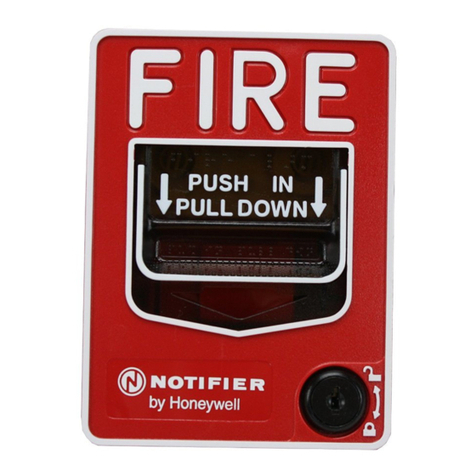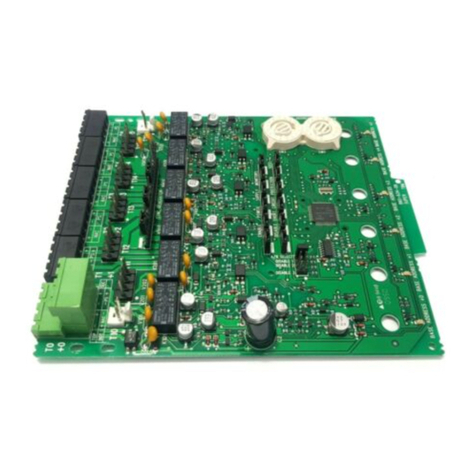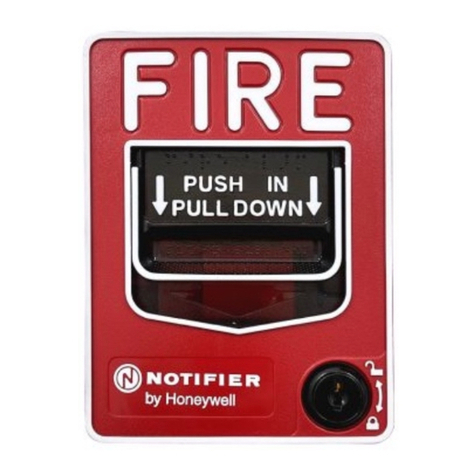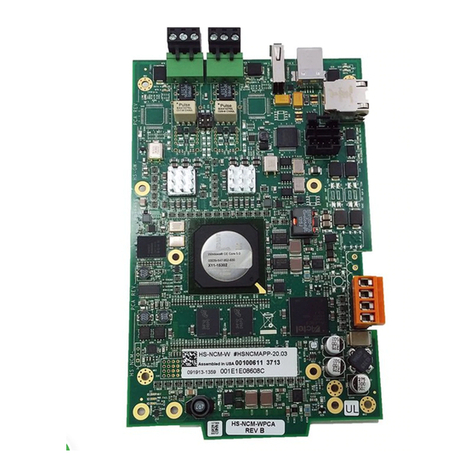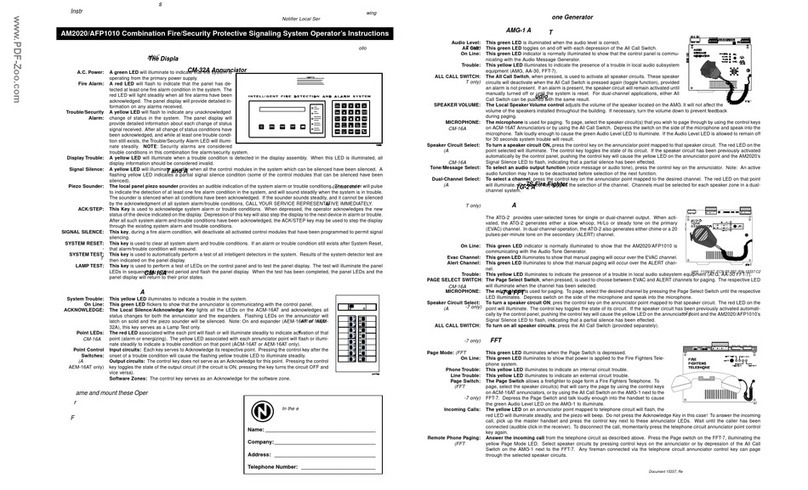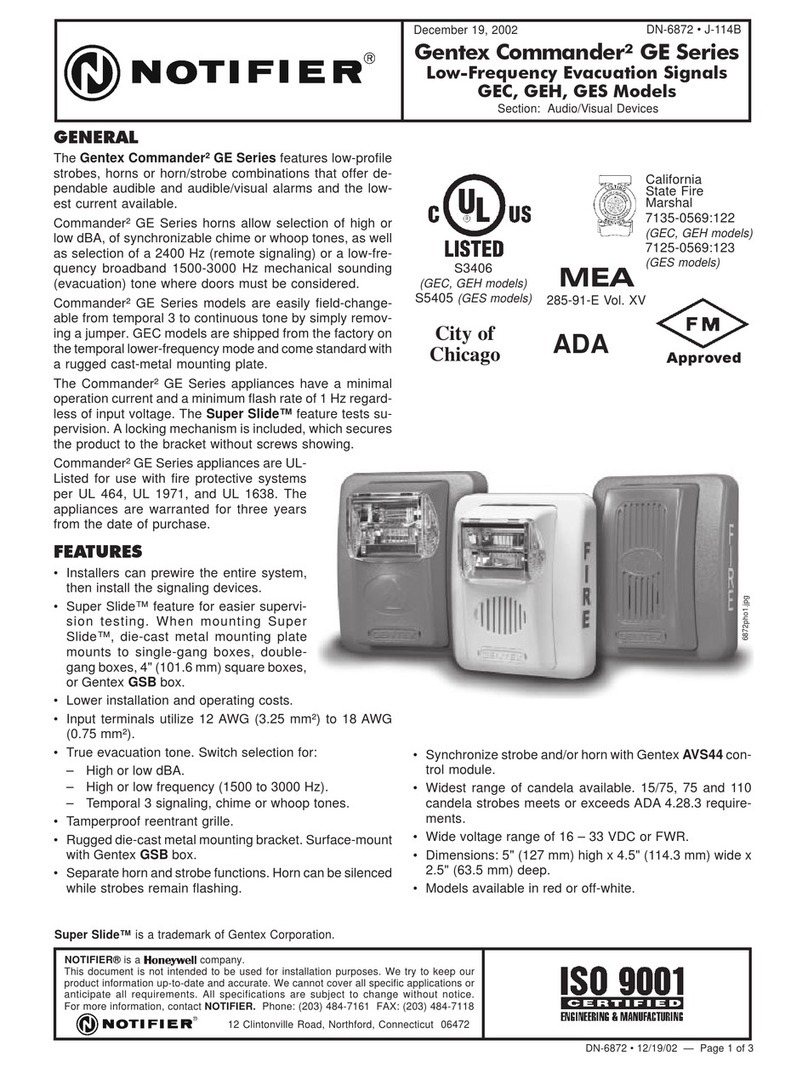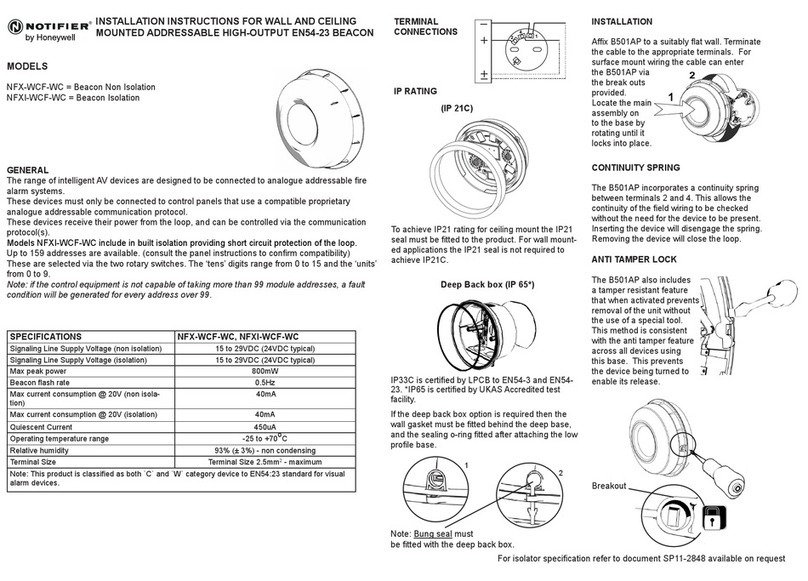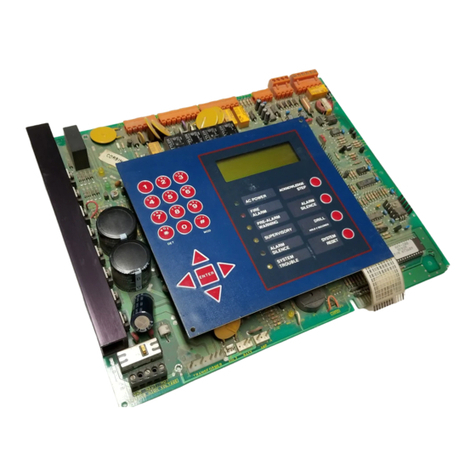
1010/2020 INSTALLATION AND PROGRAMMING MANUAL PAGE 3
COPYRIGHT © 2000, NOTIFIER INERTIA PTY LTD
XP-5M & XP-5C MODULES .................................................................................................................................................................................27
1668 FAN CONTROLS....................................................................................................................................................... 28
TERMINATION OF MODULES .................................................................................................................................................................................28
APPLICATION OF FAN CONTROL MODULES.............................................................................................................................................................28
DIP-SWITCH SETTINGS .....................................................................................................................................................29
SETTING ANNUNCIATOR BOARD ADDRESSES:........................................................................................................................................................29
SCS-8 FAN CONTROL MODULE ANNUNCIATOR......................................................................................................................................................29
ACM-16AT PUSHBUTTON & LED INDICATOR ANNUNCIATOR....................................................................................................................................30
ACM-32A LED INDICATOR ANNUNCIATOR .............................................................................................................................................................30
ACM-8R RELAY BOARD ANNUNCIATOR ................................................................................................................................................................30
LDM-32 LED DRIVER ANNUNCIATOR....................................................................................................................................................................31
LCD-80 LCD MIMIC ANNUNCIATOR (DUAL MODE) IN ACS MODE............................................................................................................................31
LCD-80 LCD MIMIC ANNUNCIATOR (DUAL MODE) IN TERMINAL MODE....................................................................................................................32
LCD-80TM LCD MIMIC ANNUNCIATOR (TERMINAL MODE).....................................................................................................................................32
APPLYING/REMOVING POWER TO THE FIRE ALARM SYSTEM ..............................................................................................33
SECTION TWO: PROGRAMMING.....................................................................................34
PROGRAMMING OVERVIEW ...............................................................................................................................................34
RECOMMENDED PROCEDURE ...............................................................................................................................................................................34
OVERVIEW ..........................................................................................................................................................................................................34
MAIN PROGRAMMING MENU..............................................................................................................................................35
PARTIAL SYSTEM PROGRAMMING .....................................................................................................................................36
LIB INSTALLATION 1=INST) .................................................................................................................................................................................37
LIB LOOP STYLE 4 OR STYLE 6 (2=STY)..............................................................................................................................................................37
TIME DELAYS (3=TDLY) ......................................................................................................................................................................................38
AUDIO VISUAL POWER SUPPLIES (4=AVPS)..........................................................................................................................................................38
ZONE BOUNDARY (5=ZBND)................................................................................................................................................................................39
EXTERNAL EQUIPMENT (6=EXTEQ.......................................................................................................................................................................39
LOCAL PARAMETERS (7=LOCP)...........................................................................................................................................................................40
ISIB (8=ISIB)......................................................................................................................................................................................................41
ADDITIONAL SYSTEM PARAMETERS (9=PARM).....................................................................................................................................................41
Day/Night Sensitivity...................................................................................................................................................................................42
Drift Compensation .....................................................................................................................................................................................43
INTERNATIONAL DISPLAY OPTION (0=CONT, 1=IDO)............................................................................................................................................43
FULL SYSTEM PROGRAMMING ..........................................................................................................................................43
PARTIAL POINT PROGRAMMING ........................................................................................................................................44
TYPE ID (1=TYPID) ............................................................................................................................................................................................45
CONTROL-BY-EVENT 2=CBE)..............................................................................................................................................................................45
LABEL (3=LBL)....................................................................................................................................................................................................46
OPTIONAL FEATURES (4=OPTNS)........................................................................................................................................................................47
ANNUNCIATOR MAPPING (5=AMAP).....................................................................................................................................................................47
COOPERATIVE CONTROL-BY-EVENT (6=CCBE) ....................................................................................................................................................48
REMOVING A DEVICE (5=REMV) ......................................................................................................................................52
CHANGING THE PASSWORD 6=PSWD...............................................................................................................................52
A Forgotten Password?...............................................................................................................................................................................52
CHANGING THE “ALL SYSTEMS NORMAL” MESSAGE (7=MSG)..........................................................................................52
ACCESSING THE HISTORY LOG (8=HIS)............................................................................................................................53
START...............................................................................................................................................................................................................53
STOP.................................................................................................................................................................................................................53
CLEAR ..............................................................................................................................................................................................................53
PROGRAMMING GUIDELINES:............................................................................................................................................54
WHAT IS A SOFTWARE ZONE ................................................................................................................................................................................54
FORWARD-ACTIVATING ZONES .............................................................................................................................................................................54
REVERSE ACTIVATING ZONES...............................................................................................................................................................................54
CONTROL BY EVENT -LISTS AND EQUATIONS .........................................................................................................................................................54
C.B.E Equations: Operators........................................................................................................................................................................56
C.B.E SIZE LIMITATIONS ......................................................................................................................................................................................59
COOPERATIVE CONTROL-BY-EVENT .....................................................................................................................................................................60
C.B.E PROGRAMMING EXAMPLES.........................................................................................................................................................................60
SOFTWARE TYPE-ID’S - AN OVERVIEW........................................................................................................................63












